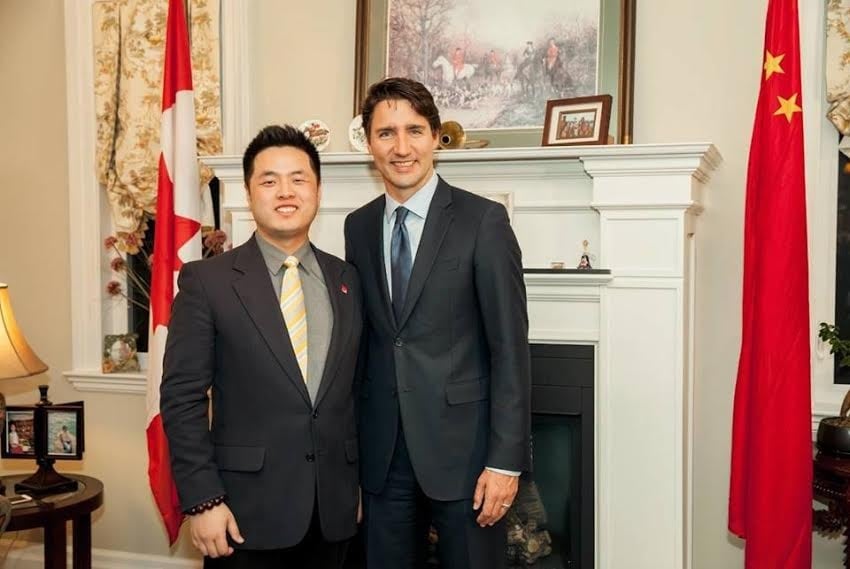How the Chinese Government with Trudeau's Help Took Control of BC Seniors’ Homes
And why the Anbang saga is a symbol of our indifference to seniors’ support.

Ultimate decisions about 21 B.C. seniors’ residences were made in Anbang’s Beijing headquarters — now controlled by the Chinese government.
/arc-anglerfish-tgam-prod-tgam.s3.amazonaws.com/public/ZHCDNUEI4FGTNG3FNUQT2I2CNY.JPG)
Anbang chairman, Wu Xiaohui arrested, but wont be convicted over sale of seniors home ...

In December it was reported, “Vancouver businessman Miaofei Pan told The Globe and Mail that he had invited Trudeau to a fundraiser at his home in November in an attempt to lobby the prime minister to allow Chinese investment in the country (particularly in senior care), lower the bar for foreign real estate developers eager to participate in Canada, as well as relax immigration restrictions for Chinese financiers.” At the $1,500 fundraiser it was noted that, “more than 80 guests dined and had their photographs taken with Mr. Trudeau. The event is one of several Liberal Party fundraising events aimed at wealthy Chinese-Canadians. Attendance figures suggest the party collects $50,000 to $120,000 per event. This all raises serious questions regarding if the Liberal government was bought off for the Anbang purchase.

Great! The lives of seniors in B.C. care homes, where they are already over-drugged and under-supported, now depend on the Chinese government.
On Friday, Beijing seized control of Anbang Insurance Group, a financial giant with investments around the world. It cited corruption, fraud and a risk the whole $390-billion company could go broke.
Last year, Anbang spent an estimated $1 billion to buy Residential Concepts, which operates 21 seniors homes in British Columbia. It’s the biggest private provider in the province, collecting $87 million from the provincial government in 2015/16.
Anbang has no experience in seniors care. Its finances were murky and ownership so tangled as to be incomprehensible. It offered no promises of additional investment in the company or increased employment. Concerns about its business practices were already widespread.
Mackenzie’s annual review found only 15 per cent of facilities were meeting the guideline of 3.36 hours of direct care per resident per day — an improvement over the previous year.
The number sounds abstract. But the reality is that a lack of staff to meet residents’ needs translates into dramatic reductions in quality of life — sitting in soiled diapers, simply because no one is available to help you to the bathroom, showering once a week or less often. And there is the simple lack of someone to talk to for a few minutes, as overworked staff try to keep residences running.
Perhaps as a result, “25 per cent of residents were prescribed antipsychotic medications without a diagnosis of psychosis,” Mackenzie noted. Almost half — 48 per cent — were on antidepressants, even though only 24 per cent had been diagnosed with depression.
And the government has steadily been reducing the hours of home care support for eligible seniors, even though that is the most cost-effective way to keep them healthy and in their homes.
The Anbang deal is the natural continuation of the BC Liberals’ ideological commitment to hand seniors care over to private companies striving to maximize return for their owners.
A 2017 Canadian Centre for Policy Alternatives report noted that between 2001 and 2016, the number of long-term care beds provided by non-profits and the health authorities was cut by more than 10 per cent. The number of spaces provided by for-profit companies increased by 42 per cent. BC Liberal policies promoted for-profit care.
Mackenzie’s report suggests that might be good for companies, but bad for seniors. Last year, 33 per cent of facilities owned and operated by a health authority met the care guidelines, hardly a great record. But among contract residences — including the private businesses — the number was four per cent.
The new government took a significant step to address the problem in this month’s budget, providing $548 million over three years “to improve services for seniors across the continuum, including investments in primary care, home and community care, residential care, and assisted living.” A focus will be on ensuring residences, which serve 28,000 people, provide the recommended number of hours of care.
But we have miles to go. And the Anbang saga — especially governments’ willingness to allow a high-risk Chinese takeover of a Canadian business — show how much our attitude to the importance of seniors’ support needs to change. ![[Tyee]](https://thetyee.ca/ui/img/xico_fishie.png.pagespeed.ic.qRYDhMYjhr.webp)

No comments:
Post a Comment
Comments always welcome!